You can contact LEARNZ, part of CORE Education, at:
Postal Address:
PO Box 13 678,
Christchurch 8141,
New Zealand

Watch Shelley's diary cam video.
Kia ora koutou,
The cloud moved in overnight and it was hard to see where the sea ice finished and the cloud started. The forecast was for clearing weather and light winds so rather than heading out into the field early you stayed indoors at Scott Base.
Antarctic audioconferences
Craig connected to the audioconference via a radio link but at times it was difficult to hear him. It can be easy to take technology for granted but down here in Antarctica you have to be prepared for the times when things don’t work. We can’t use cell phones here, the internet is limited and you can’t get television, although I hear that a special effort is being made to link a satellite so we can all watch the Rugby World Cup over the weekend. With a bit of perseverance we managed to complete the audioconference with Kenakena School and Upper Harbour Primary School. You can listen to a recording of this session.
Sampling sea ice
Over morning tea you met up with Inga and Greg who have been analysing ice cores in the cold lab. It was really interesting to see how ice cores are drilled and how much they can tell us about what was happening in the environment at the time the ice was formed. If you know what to look for ice cores can be a great way of recording changes in the air and sea. Greg took you out to drill an ice core in the sea ice outside Scott Base.
Out of the fridge and into the freezer
Once the core was drilled you took it back to the -22 degree lab to see how they cut ice cores into sections to learn more about how the sea ice formed. It felt as though we were walking from the fridge into the freezer when you stepped from outside into the cold lab. Greg and Inga showed you how chunks of the drilled ice core are cut with a bench saw and then the core is cut down the middle. A centimetre wide section is then thinned down using an instrument called a metrotome which slices off layers until the ice is only a few millimetres thick. When a special light is shone through this section you can clearly see the structure of the ice. By looking at the ice structure the scientists can see how much ice has formed as the surface loses heat to the air and how much has formed from supercool water creating platelet ice. Supercool water is produced from sea water melting the bottom of ice shelves, this water then flows out from the ice shelf, rises and can form platelet ice. It is hoped that the measurements from this work can be added to climate models to make them more accurate. Watch the video about this.
A recovery mission
Fortunately the weather cleared after lunch so we headed out on the skidoos to recover the sea ice temperature probe that you learnt about yesterday. If this instrument was left out on the sea ice it would be lost to the ocean when the sea ice breaks out over summer. You have now travelled a lot of kilometres on the skidoo so it was a quick journey out past the K131 field camp. The scientists travelled by Hagglund and waited so you could follow. There are no flags to mark the way to the probe site so you were able to explore new ground.
To recover the temperature probe the team had to drill a hole in the sea ice and then use a machine that heats sea water which is then used to melt the ice around the probe. This machine runs off a generator and uses about the same amount of energy needed to heat ten houses! It didn’t take long before the probe was freed from the ice and recovered. The data logger which had been anchored to a frame above the ice was also collected. I was amazed that this data logger wasn’t damaged in the fierce winds that hit this area in winter.
How salty, deep and cold is the sea water?
Once your recovery mission was complete you helped the scientists drill another hole through the sea ice so the CTD could be lowered into the sea. A CTD measures how much salt is in the water, the temperature and pressure. The CTD was lowered on a cable and you may have been surprised at how much cable was needed. The sea is over 500 metres deep here and because it hasn’t been studied much is important for the scientists to take more than one recording. A CTD will also be deployed at the K131 field camp. You can find out more in the video.
Out to the K131 field camp for the night
After helping the scientists you headed over to the K131 field camp to stay the night. With the sun shining brightly you may have lost track of time but my stomach was reminding me that it was time for dinner. Luckily Craig and Gabby had organised a meal for you. It was fantastic to arrive at a warm camp in the orange light of evening and enjoy good food and company. It was nearly midnight before you finally wriggled into your sleeping bag for a well-earned rest.
Tomorrow you will spend the day catching up with what is happening around the camp before heading back to Scott Base.
See you in the morning,
Shelley, the LEARNZ field trip teacher.
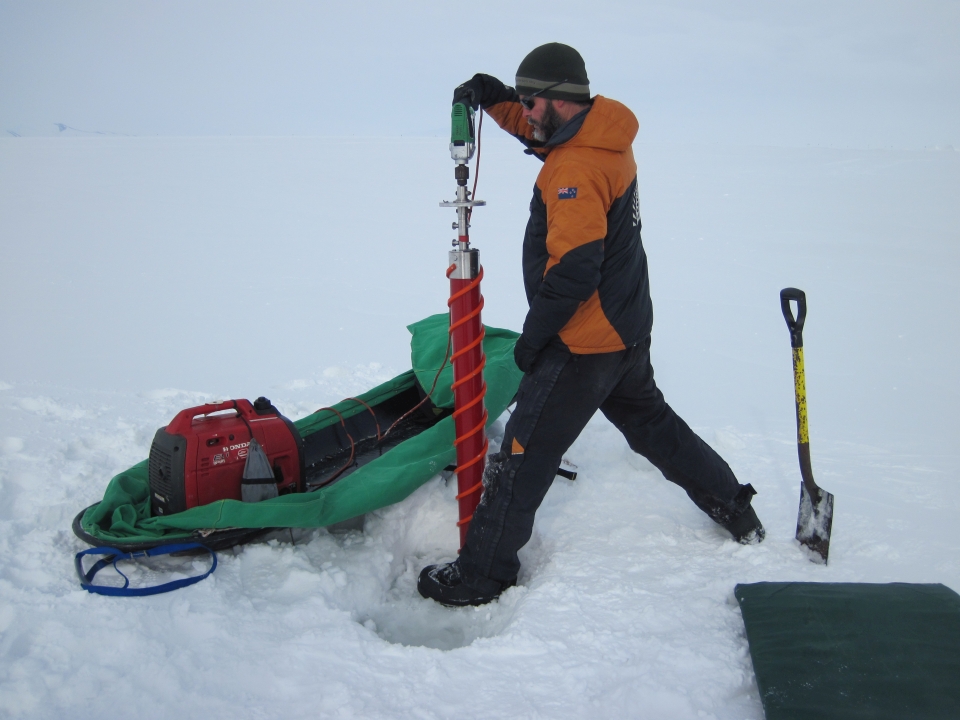
Greg shows you how to drill an ice core in the sea ice. What can a scientist find out from an ice core? Image: LEARNZ.
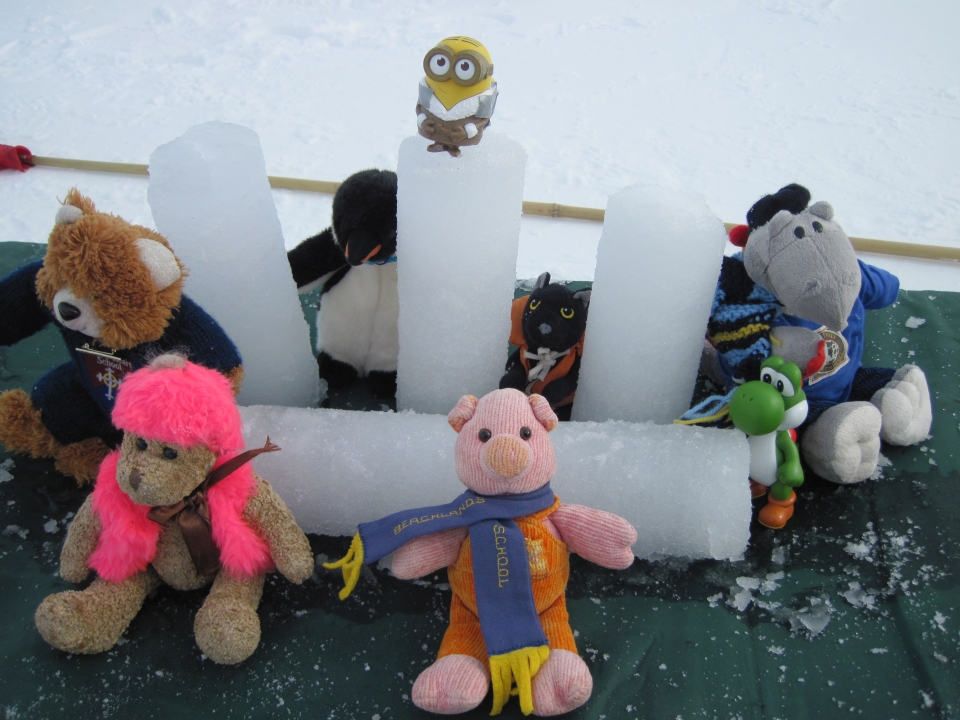
The ambassadors check out the ice core that Greg drilled in the sea ice. Image: LEARNZ.
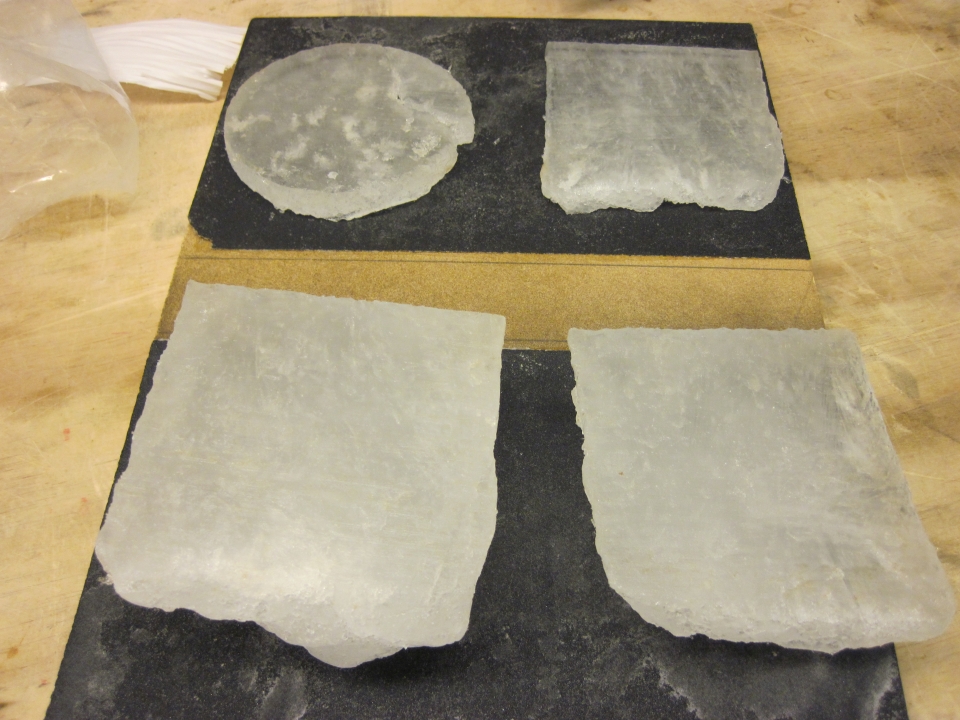
Inside the cold lab the ice core can be cut in half so a rectangular vertical section can be analysed. Horizontal round slices can also be examined. Why do you think the lab needs to be a constant -22 degrees Celsius. Image: LEARNZ.
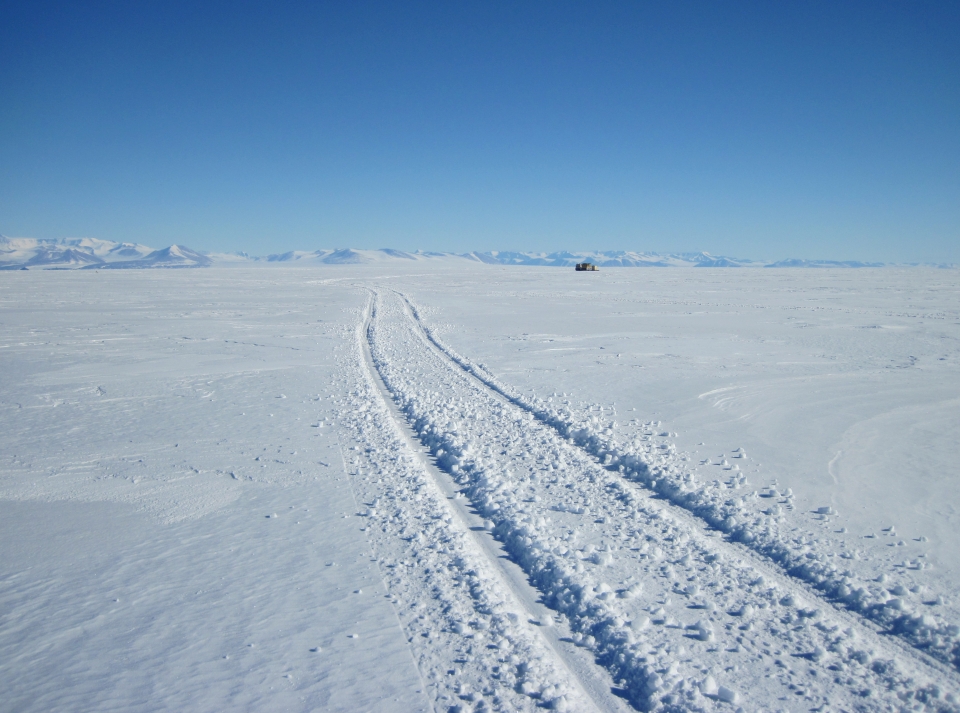
In the afternoon you headed out to recover the temperature probe. Image: LEARNZ.
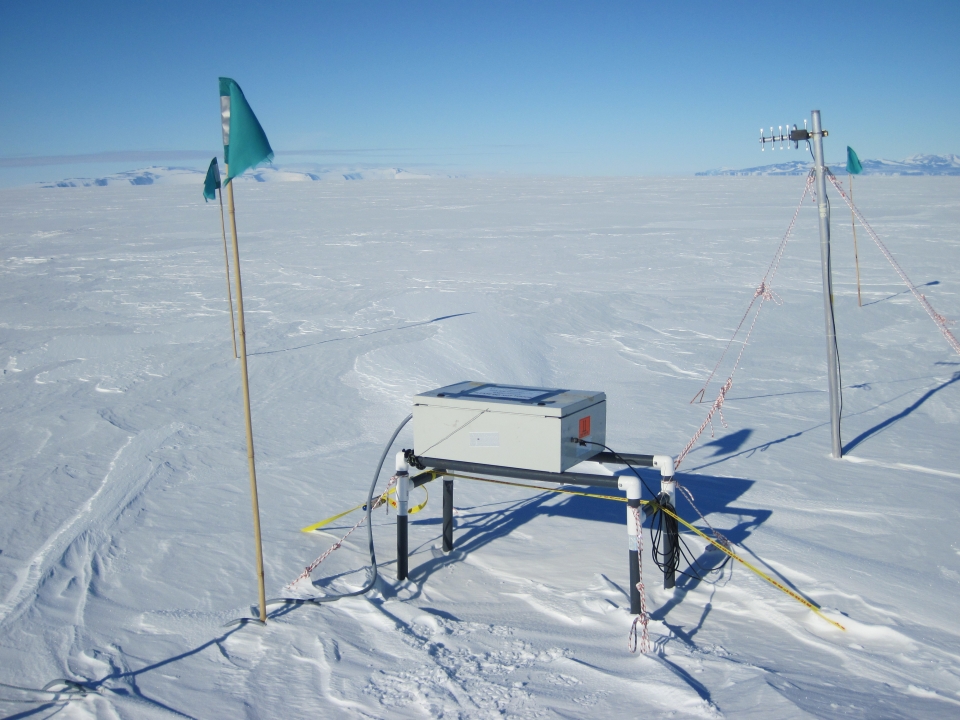
The data logger for the temperature probe sits in a box above the ice. What happens to the data from the temperature probe? Image: LEARNZ.
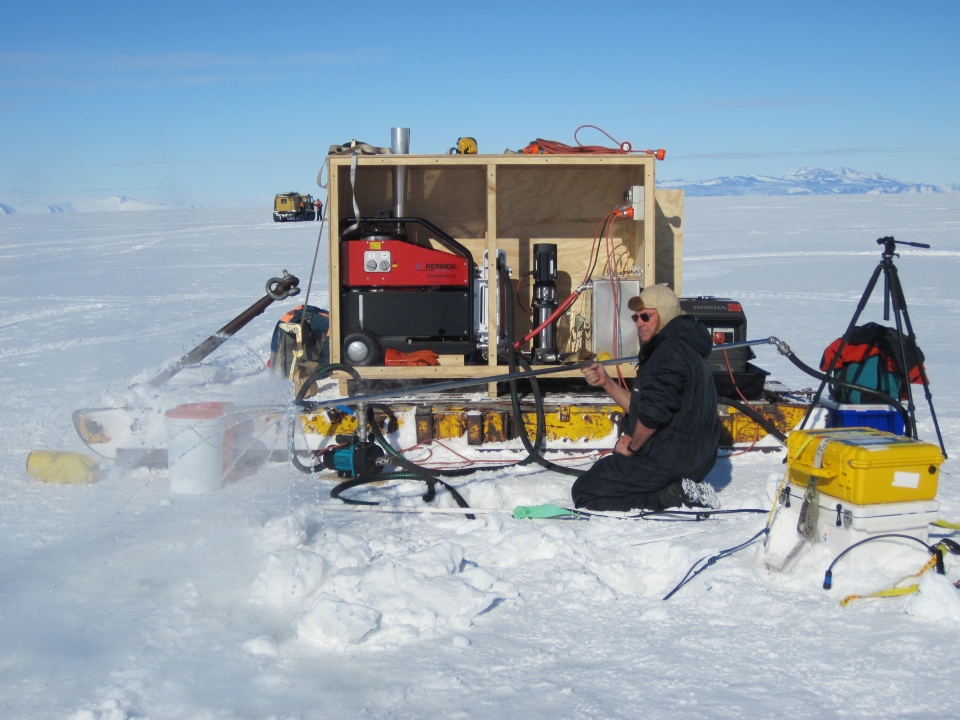
Tim from the K131 team uses hot water to melt the ice out to recover the temperature probe. Where does Tim get the water from to do this? Image: LEARNZ.
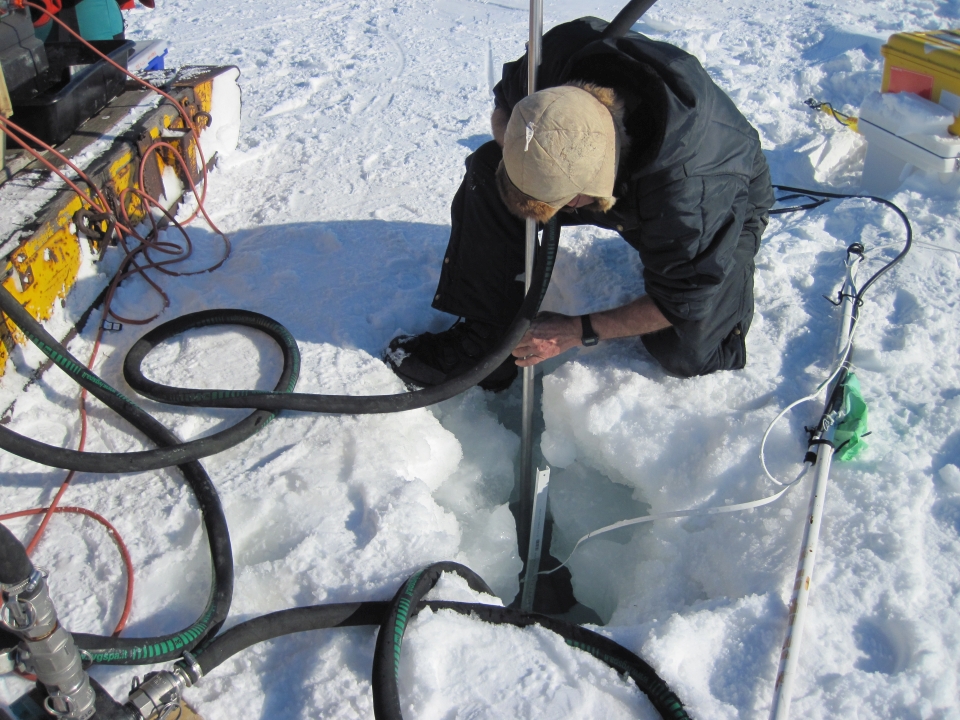
It takes time and patience to melt all the ice around the temperature probe and free it from the ice. Why do you think it is important to recover the probe? Image: LEARNZ.
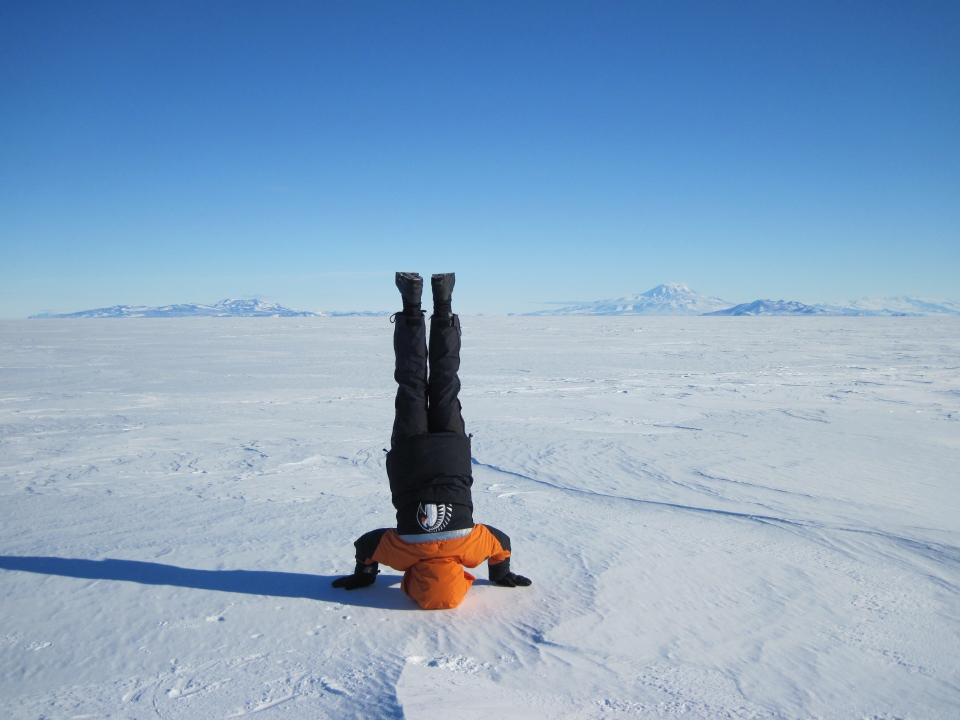
It can be chilly working on the sea ice so Shelley decides it's time for some exercise to warm up! Image: LEARNZ.
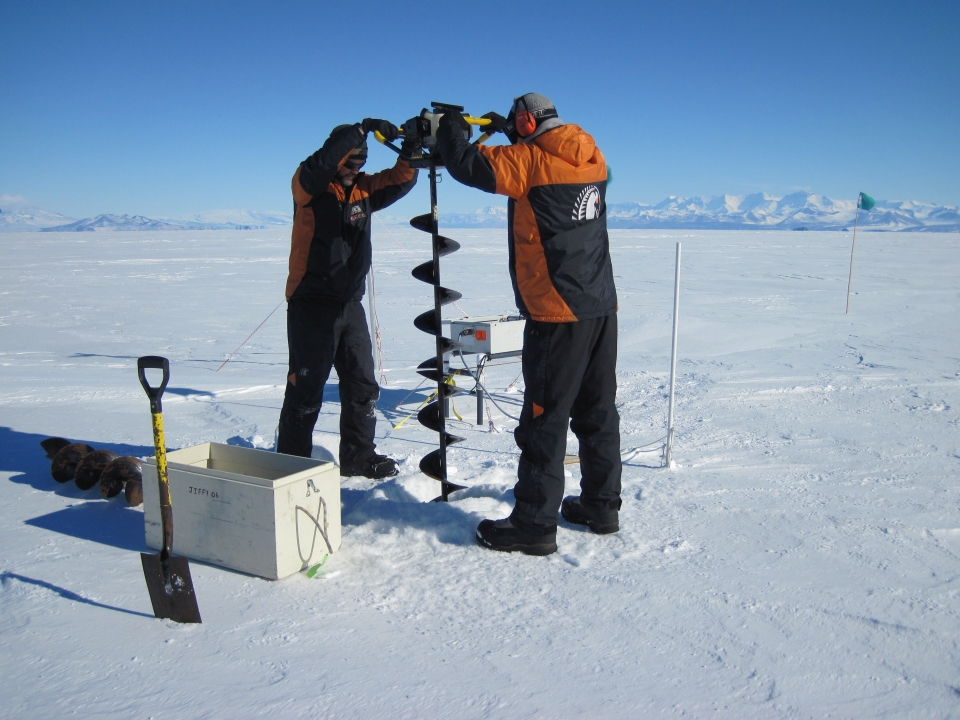
Greg and Andrew drill a hole in the sea ice so they can deploy the CTD. What does a CTD measure? Image: LEARNZ.
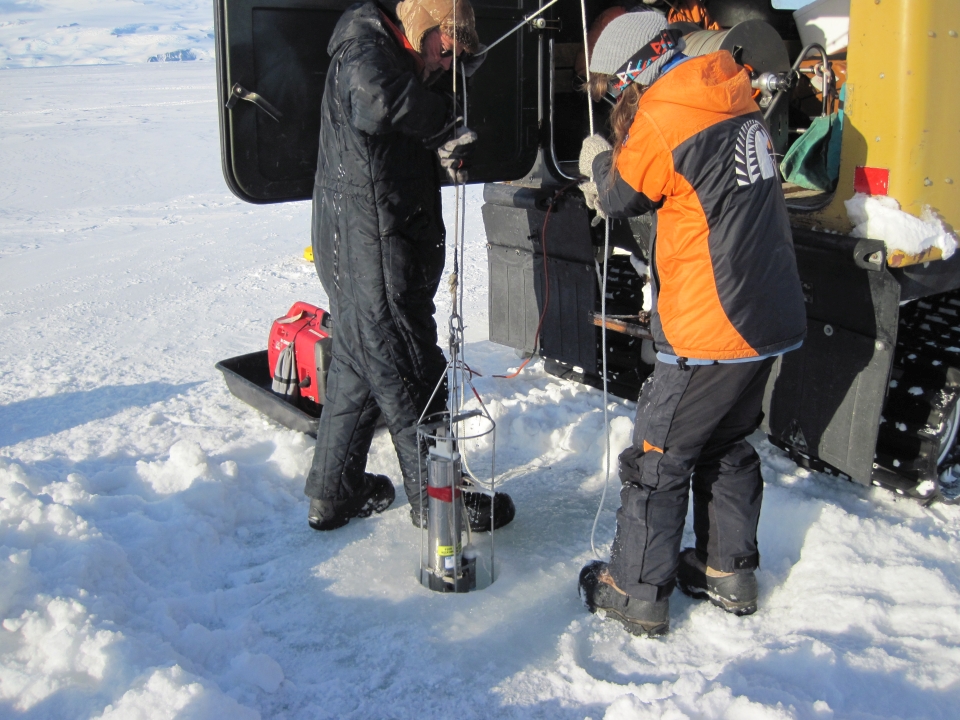
Inga and Tim get the CTD ready to lower through a hole in the sea ice. Image: LEARNZ.